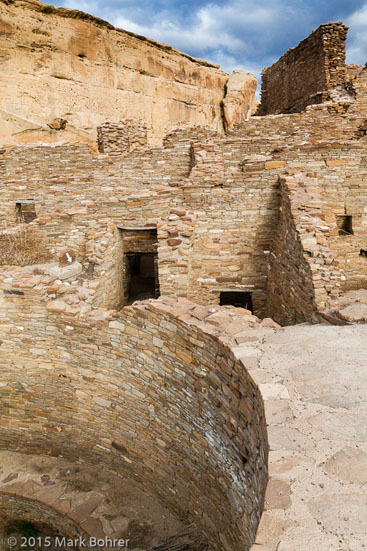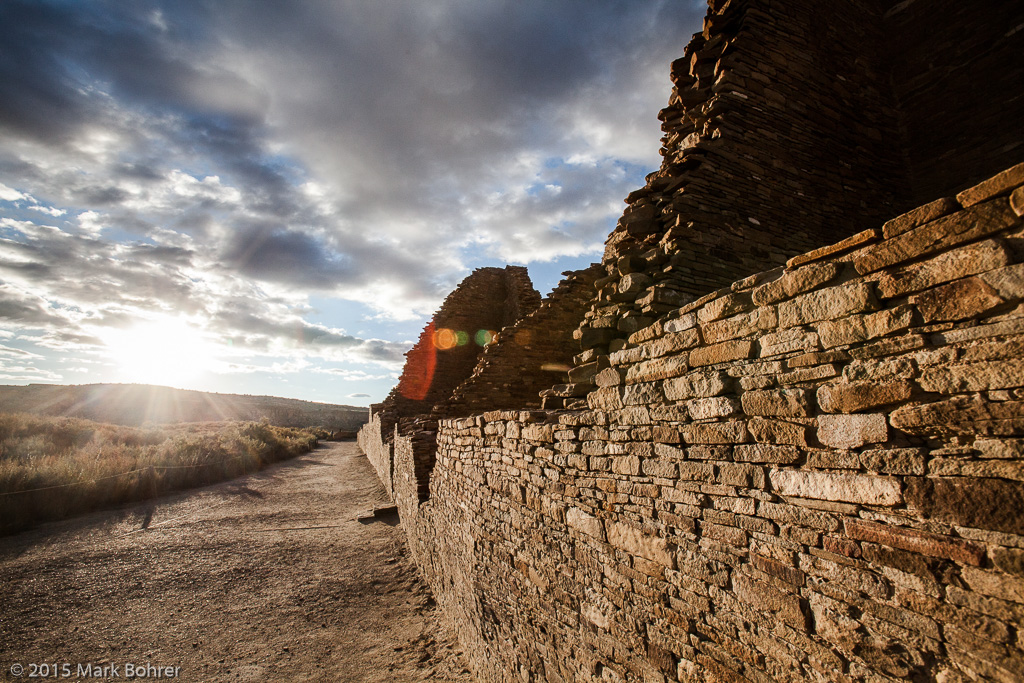Grabby Landscapes, Ruins, and ArchitectureMy last post presented visual storytelling tips for wildlife shooting. But what if you’re not shooting wildlife? Glad you asked – here are six more tips for you landscape, ruins and architectural photographers. 1. Ruins may have been built over long periods of time, like Pueblo Bonito’s 200+ year construction history. Masonry may go from neatly-dressed and fitted to seemingly random. Try to photograph older and newer sections separately, highlighting any differences in architecture or construction. 2. Walk around. Mountain Bike Action photographer John Ker taught me to shoot different viewpoints at bike races to avoid visual boredom. Moving around works for ruins and architecture too. 
3. Give an idea of scale and what it might have been like to live there. Parallel doorways connect rooms in many Southwestern ruins, and lead your viewer’s eye through the interior. They look cool, too. Great Kivas may have burn-marked walls from ritual abandonment, charred wood stubs that accompanied long-gone skeletons from an attack, or weeds growing from the dirt floor for a sense of passed time.  A bench or wall curving from near the camera to far inside gives an idea of a Great Kiva’s size. A tall masonry wall with the crescent moon rising through a window shows the massive size of even a small Great House. 
4. If walls have alignments with cardinal directions or lunar lines of sight, capture their straightness. Find out when and in what direction moonrise is expected (it’s repetitive in an 18.6 year cycle, and annually to a lesser extent), and choose a viewpoint showing its alignment with walls or windows. 5. If you find potsherds or other artifacts, photograph them and leave them there. In a county or national park, let the staff know what you found and where it was. The location can tell a lot to an archaeologist. It’s also best to otherwise keep their location private. 6. Choose a good parting shot. Driving the dirt road from Chaco Canyon to Nageezi on winter evenings, I’d routinely see ‘Oh wow’ sunset colors in my rear view mirror, and stop for a photograph. |
(408) 483-3782
Curious about how to shoot ruins?(408) 483-3782

Recent Comments